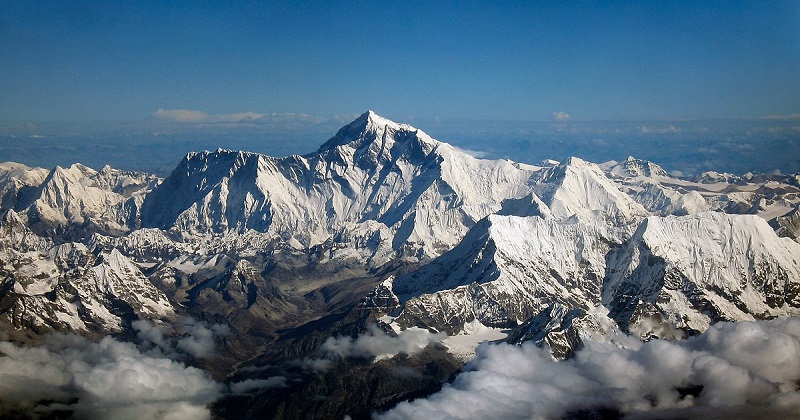Trekking through the majestic landscapes of Nepal’s Himalayas is an experience like no other, and the Manaslu Circuit Trekking stands out as one of the most captivating and rewarding trekking routes in the country. This trek, which encircles the mighty Mount Manaslu—the eighth-highest mountain in the world—offers trekkers an unforgettable journey through remote villages, alpine forests, and awe-inspiring mountain vistas, all while preserving the tranquility of Nepal’s less-visited regions. If you’re looking for an adventure that combines physical challenge, cultural exploration, and unparalleled natural beauty, the Manaslu Circuit Trek is the perfect choice.
What is the Manaslu Circuit Trek?
The Manaslu Circuit Trek is a 177-kilometer loop around Mount Manaslu, situated in the remote Gorkha District in northwest Nepal. The trek typically takes 14 to 18 days to complete and is known for its rugged terrain, high-altitude passes, and rich cultural experiences. The highest point on the trek is Larkya La Pass, which sits at an altitude of 5,160 meters, providing trekkers with stunning panoramic views of surrounding peaks like Manaslu, Himalchuli, Ganesh Himal, and Ngadi Chuli.
This trail offers a perfect balance of physical challenge and scenic beauty, making it one of the best trekking routes for those seeking a more authentic and off-the-beaten-path adventure.
Highlights of Manaslu Circuit Trekking
1. Breathtaking Himalayan Views
Throughout the Manaslu Circuit Trek, trekkers are treated to breathtaking views of the surrounding Himalayan peaks. The Manaslu massif dominates the landscape, providing dramatic views from various vantage points along the route. Other peaks such as Himalchuli, Ngadi Chuli, and Ganesh Himal are visible, creating a stunning backdrop to your journey. The trek offers some of the most incredible and serene mountain vistas in Nepal, especially as you approach the Larkya La Pass, where panoramic views of snow-capped peaks stretch for miles.
2. Cultural Encounters with Tibetan Buddhism
One of the most enriching aspects of the Manaslu Circuit Trek is the opportunity to immerse yourself in the culture of the mountain communities. The trek takes you through several remote villages, many of which are inhabited by Tibetan Buddhists. These villages, such as Samagaon, Namrung, and Lho, are filled with Tibetan prayer flags, mani walls (stone walls inscribed with Buddhist prayers), and monasteries, providing trekkers with a unique cultural experience.
The local people of the region maintain traditional Tibetan lifestyles, and trekking through these villages allows you to witness daily life, local festivals, and Buddhist ceremonies. A highlight is visiting the Pungyen Monastery near Samagaon, which is perched in a breathtaking location and offers insight into the spiritual practices of the region.
3. Trekking Through Varied Landscapes
The Manaslu Circuit is known for its diverse landscapes, ranging from lush subtropical forests to alpine meadows and rugged terrain. Starting at lower altitudes, the trek takes you through forests filled with bamboo, rhododendron, and oak trees. As you ascend, the landscape transforms into alpine meadows and high-altitude deserts. The contrast between the lush greenery at lower elevations and the stark, snow-covered mountains at higher altitudes is one of the key features that make this trek so unique.
Crossing suspension bridges over rushing rivers and trekking alongside cascading waterfalls also adds an element of adventure to the journey. The scenery is ever-changing, and every day brings a new and exciting view of the Himalayas.
4. Challenging but Rewarding
The Manaslu Circuit Trek is considered a moderate-to-challenging trek. The Larkya La Pass, at 5,160 meters, is the highest point on the trek, and it requires good acclimatization. The climb to this pass is strenuous and takes several hours, but the reward is well worth it. From the summit of Larkya La, trekkers are treated to one of the best panoramic views in the Himalayas.
The trek also involves steep ascents and descents, particularly in the higher-altitude sections. While the trail is generally well-maintained, the rugged nature of the terrain and the challenge of crossing high-altitude passes means that trekkers should be physically fit and prepared for long days of hiking. However, the sense of accomplishment upon completing the trek is unparalleled, and the stunning views throughout make the effort worthwhile.
Best Time to Trek the Manaslu Circuit
The best time to trek the Manaslu Circuit is during the autumn (September to November) and spring (March to May) seasons. These months offer clear skies, moderate temperatures, and excellent visibility, allowing trekkers to fully enjoy the stunning views of the mountains. The weather is generally stable during these periods, with sunny days and crisp nights.
Trekking during the summer monsoon season (June to August) is not recommended, as the trails can be slippery and prone to landslides. Winter (December to February) is also less ideal due to the cold temperatures, particularly at higher altitudes.
Permits Required for Manaslu Circuit Trekking
Since the Manaslu Circuit is a restricted area, trekkers must obtain special permits before embarking on the trek. These include:
- Manaslu Restricted Area Permit (RAP): This permit is required to trek in the restricted zone around Mount Manaslu. It can only be issued through a licensed trekking agency.
- Manaslu Conservation Area Permit (MCAP): This permit allows access to the Manaslu Conservation Area.
- Annapurna Conservation Area Permit (ACAP): This permit is required for trekking in the Annapurna region.
Trekking with a licensed guide is mandatory, and the permits must be arranged through a registered agency before the trek.
Conclusion
The Tsum Valley Trek is a truly exceptional trekking experience that offers everything an adventurer could hope for: spectacular Himalayan vistas, rich cultural encounters, and a challenging yet rewarding journey through remote regions of Nepal. It is perfect for those looking for an authentic and quieter alternative to more crowded trekking routes in Nepal.

